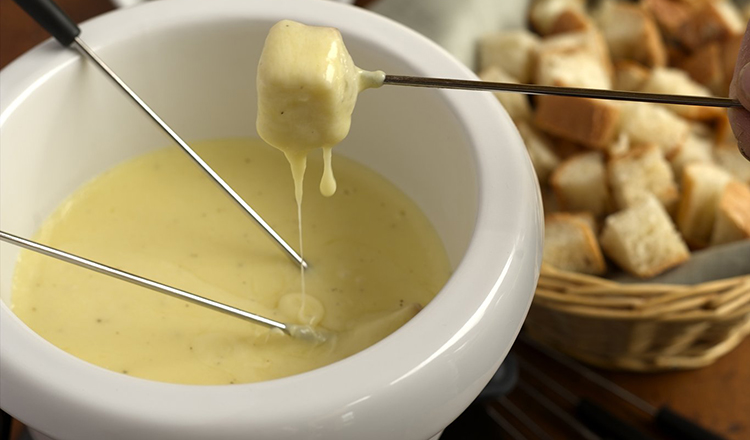
You’ve heard the term plenty of times: melting cheese. “Use your favorite melting cheese!” “You can substitute any good melting cheese.” And while that seems easy enough, how do you know if a cheese is a good melting cheese?
When we say “melting cheese,” we are looking for a cheese that will get ooey and gooey when heated, for dishes like macaroni and cheese, quesadillas, or lasagna. And while all cheese is good (this is almost non-negotiable, right?), not all cheese is good in these applications.
There is a lot of science behind what makes a cheese melt well—not to mention how it melts—but we could never cover it all here! So, let’s talk melting cheese 101.
At the most basic, cheese is made up of water, protein, fat, and acid. Fat and water are sort of key in determining whether a cheese will melt well, so if a cheese is high-fat and/or high-moisture, you can expect good meltability (asterisk asterisk asterisk! Keep reading!).
High-moisture cheeses include mozzarella, brie, raclette, young gouda, young Cheddar, and good old American cheese. If you aren’t sure about the moisture content of your cheese, give it a gentle squeeze. Higher moisture cheeses will yield to a gentle touch (on behalf of the cheese mongers of the world, please don’t aggressively squeeze your cheese!). Very hard cheeses, like Parmigiano-Reggiano or aged dry Jack will be dry and won’t melt well, though they can be incorporated into melty cheese dishes as a secondary cheese for a punch of flavor.
High-fat cheeses include Swiss, Cheddar, Gouda, Edam, blue cheeses, and Colby or Monterey Jack. High-fat cheeses should be melted gently to keep the water and fat from separating, which can make the cheese appear greasy or curdled.
As you’ve experienced, some cheese melts to become creamy, like brie, while some melts to become stringy, like mozzarella, or stretchy, like Cheddar. This is the result of the cheesemaking process and is distinct to every type of cheese. For a cheese that will be fondue-like fresh from the rind, you’ll need to choose naturally very soft cheeses, like Camembert or cream cheese. Firmer cheeses like Cheddar and Gruyère need to be incorporated with other ingredients, like liquids and starch, to achieve that same consistency.
Some high-moisture and/or high-fat cheeses are not well-suited for melting because of their acidity, or even the type of acid that is used to create the cheese. Fresh cheeses like feta, cotija, paneer, and halloumi will not melt when heated, making them great additions to hot dishes where you want them to hold their shape. In fact, halloumi is often griddled or grilled, showing how well it holds up to high-heat.
Of course, lots of artisan or small-producer cheeses don’t necessarily fall into grocery store cheese titles, like Cheddar or Swiss, which can make it hard to determine their meltability. This is when experience comes into play, which means you either need to experiment with a ton of cheese (oh, darn!) or find a great cheese seller who can explain the properties of cheese before you buy them. Don’t be afraid to tell them what you’re cooking and ask for recommendations—that’s their job!
